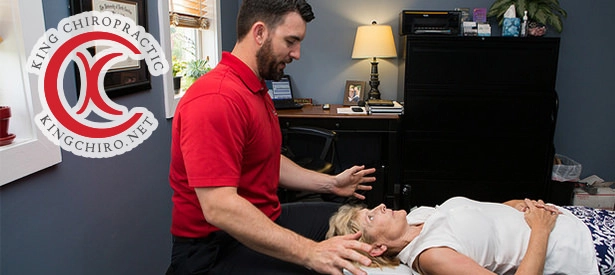How Does a Chiropractor Find the Cause of Your Pain? from a Wilmington Chiropractor
How Does a Chiropractor Find the Cause of Your Pain? from a Wilmington Chiropractor

How Does a Chiropractor Find the Cause of Your Pain?
Every day people come into our office with different types of pain. Some experience pain, numbness or tingling, while others have injuries from trauma or overuse. Most of these cases don't require invasive intervention (such as surgery) and can actually be treated with more conservative methods (non-invasive methods like adjustments, stretching, exercises).
To determine if your case is pathological (physical or mental illness), a chiropractor will use various tests to help diagnose the cause of your pain. These chiropractic tests are a bit different than those used by an MD. In addition to pathology, chiropractors look for neuromusculoskeletal (the interactions between nerves, muscles and the skeleton) causes and attempt to determine if the patient will benefit from conservative/non-invasive chiropractic care or if he or she needs to consult another specialist. Chiropractors look at the body differently than MD's or DO's. We encourage movement, stretching, exercising, eating well, and getting adjustments to encourage the spine to help heal the body.
Conservative treatment methods may include:
- manual procedures, including spinal or joint manipulation or mobilization, soft‐tissue and reflex techniques;
- exercise, and other active care;
- psychosocial aspects of patient management;
- patient education on spinal health, posture, nutrition and lifestyle modifications;
- emergency treatment and acute pain management;
- other supportive measures, including the use of back supports and orthotics;
- recognition of the limitations of chiropractic care, and of the need for referral to other health professionals.
The following are just a few tools that we use to diagnose the cause of your back or neck pain:
1. Establishing Active and Passive Range of Motion
First, chiropractors need to determine whether or not a person has range of motion. Active motion occurs when the patient moves the joint through a range of motion. Passive motion happens when the doctor moves the patient's joint through the range of motion. If the patient feels pain during active or passive range of motion, this could indicate a sprain or capsular injury.
2. Orthopedic Testing (the body's muscles and skeleton, including the joints, ligaments, tendons, and nerves)
Though orthopedic tests are not all-inclusive, they can help the doctor get a better idea about the cause of your pain. The chiropractor can use individual orthopedic tests to help pinpoint the specific structure that the pain is originating from.
3. Muscle, Reflex, and Sensation Testing
These tests can help the chiropractor get basic neurological information that can help in diagnosis. Certain injuries can cause loss to all three, while other injuries may only affect sensation.
4. X-Rays
Though conservative chiropractic treatment can begin without x-rays, a chiropractor will often use these in order to view the bone alignment and get a closer look at degenerative changes. X-rays help the chiropractor locate subluxations, which can inhibit your ability to function normally.
These basic tests help chiropractors diagnose pain and develop an individual treatment plan. These tests will also help your chiropractor decide if you are a good candidate for conservative care. If not, you may need additional testing or a referral to another specialist.
If you find yourself troubled by an irritating pain in your back or neck, contact us today (910) 777-7228 for a diagnosis and discussion of your treatment options.
Monday
8:00am - 12:00pm
3:00pm - 6:00pm
Tuesday
8:00am - 12:00pm
Wednesday
8:00am - 12:00pm
Thursday
8:00am - 12:00pm
3:00pm - 6:00pm
Friday
8:00am - 12:00pm
Saturday & Sunday
Closed
King Chiropractic Hand & Foot
6934 Market St
Wilmington, NC 28411
